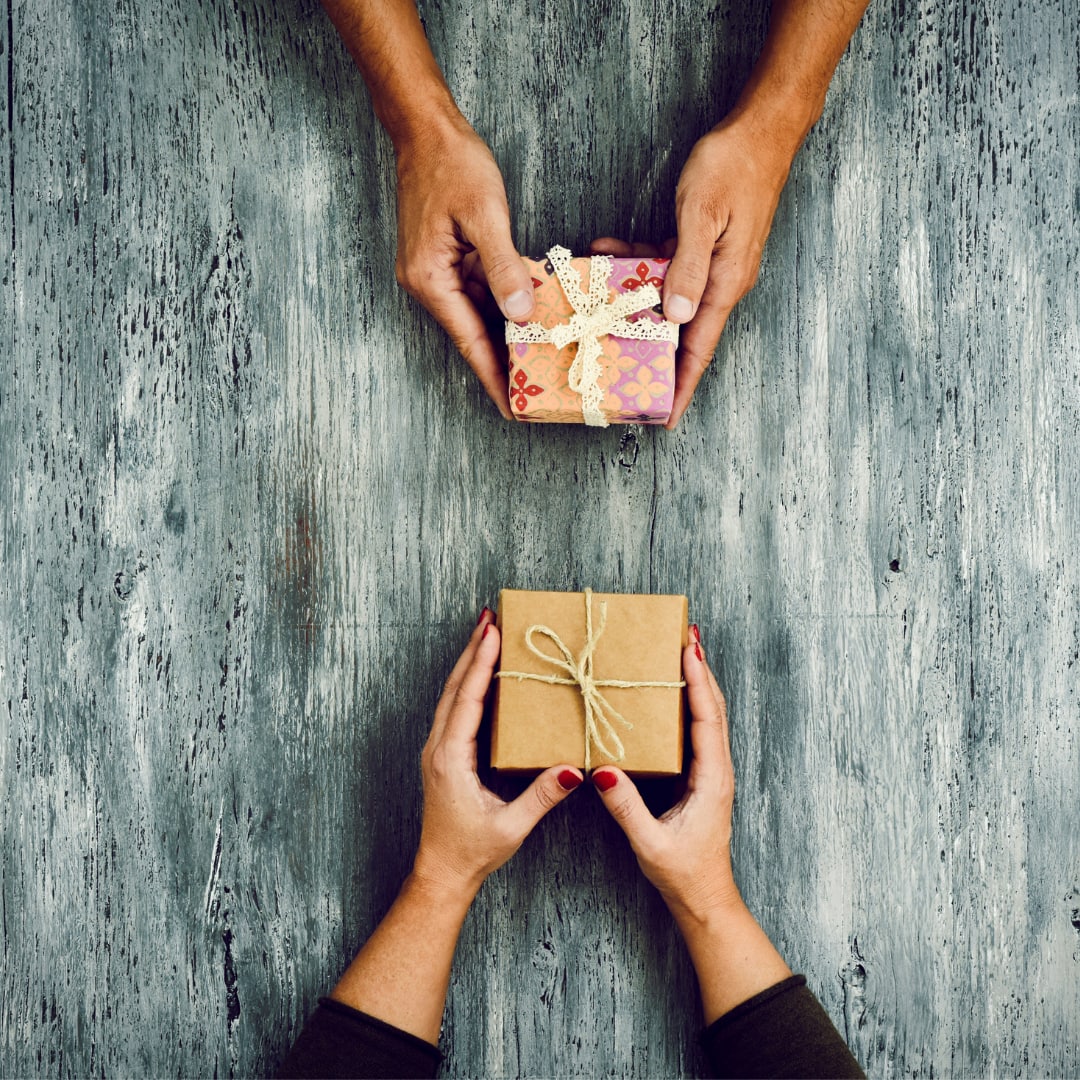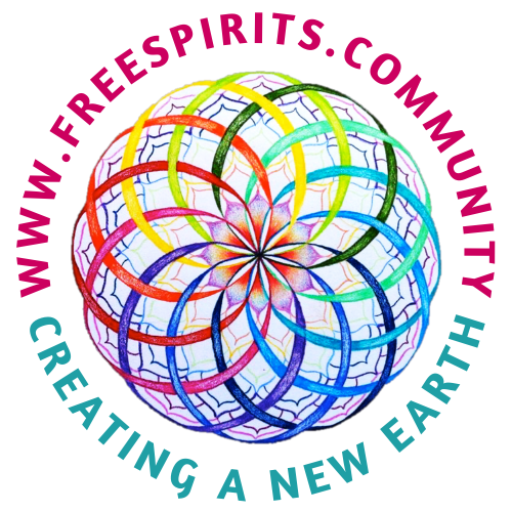
Previous blogpost
During the previous blog post we started exploring the gift economy. This gave us deeper insight into the different characteristics and dynamics within the gift economy. In addition, we also learned that the gift economy can be a form of positive activism, and that there is a causal relationship between the gft economy and the creation of close friendship and community.
This blogpost
During this blog post I wanna to explore with you how we can apply the gift economy in our individual lives. In addition, I hope to discover with you how we can apply the gift economy in small to medium-sized communities, up to the level of society as a whole.
Marc
To discover how we can apply the gift economy in our own lives, I will take the life of a dear friend as an example. This friend is Marc, Marc has been living completely in the gift economy for several years. It is not the case that Marc started living in the gift economy in one step, Marc has taken several repetitive steps and has slowly started to live in the gift economy.
Taking Small Steps
How Marc started in the gift economy is by giving away a few heads of lettuce a week to his close-knit group of friends. After a while this group of friends started to understand that Marc was generous, this group of friends started to really appreciate Marc’s gifts after a while.
A Small Gift Economy
The appreciation grew steadily, until up a certain point Marc’s friends felt the urge to give Marc gifts back out of gratitude. The friends decided to tell Marc about this, by then going in conversation with Marc about this, they came to the agreement to start giving back gifts whenever they got something from Marc. It was decided that these gifts could be anything, as long as it reflected their gratitude and also contributed to Marc’s well-being. It was also decided that these gifts could be given anytime, this did not have to happen immediately upon receiving one of Marc’s heads of lettuce.
This eventually resulted in a small gift economy between Marc and his close friends. At this moment Marc and his friends manage to meet a small part of their needs, Marc’s friends have lettuce for the week while Marc receives all kinds of other things that also help him forward.
Fulfilling Needs
At this point, Marc realizes that a small part of his needs are being met. Automatically Marc starts to think and he realizes that a small economy has developed between him and his friends. He decides to call this the ‘gift economy’. At the same time, Marc suddenly realizes that this gift economy does not have to stop with him and his friends, but that this gift economy can also be extended to larger groups of people. Marc sees beautiful potential for the gift economy and starts to dream of a gift economy on the scale of the entire society.
In all his enthusiasm, Marc discusses this idea with his friends – and although some of his friends are quite critical and think of Marc as a dreamy idealist – they eventually agree to expand their gift economy into the wider society.
Thus it came to be that the gift economy slowly began to grow and grow. The gift economy which originally started in the close-knit group of friends, quickly expanded to under the church tower, after which the entire congregation began to enjoy and reap the benefits of the gift economy. Families, associations, self-employed people, companies, they all started to participate in the gift economy to a certain extent.
Expansion Of The Gift Economy
Because our world is so vastly connected via the internet, but also because people speak to each other, and connect regularly in various other ways, the spread of the gift economy to the congregation was only an intermediate point in its further spread throughout society.
The gift economy spread quickly. From family to family, from association to association, from self-employed to self-employed… Throughout the country, these previously mainly separate islands began to connect with each other. Society underwent a transformational process into an intimately connected network where gratitude, appreciation, and all that is good flow through the streets in abundance.
Fantasizing
I confess, Marc’s example is partly fictional and fantasized, unfortunately. But whether this story is true or not, it does raise some questions that I want to explore with you:
- What could be some of the success factors that have allowed the give economy in Marc’s story to unfold to its fullest potential?
- What could be some of the obstacles that could’ve prevented the give economy in Marc’s story from developing to its fullest potential?
Success Factors
As you could read, there are no success factors explicitly mentioned in Marc’s story. The story invites us to speculate on what made the gift economy in Marc’s story so successful. However, speculation is not necessary because the success factors of a gift economy are well known. Below I list success factors that are known to me.
Giving Unconditionally
The success of the gift economy is based, among other things, on unconditional giving. Giving unconditionally means that we give without conditions and reservations, without a personal agenda. In concrete terms, this means that we give to our fellow human beings with the intention to really contribute to the well-being of that other human being, and that we do this without any motive for personal gain. This purity of giving is the beating heart of the gift economy, this because a purity of giving creates trust that forges community and friendship. Due to the presence of community and friendship, giving increases again, so that more and more needs within the gift economy are being fulfilled.
Receiving Wisely
What we can understand by receiving wisely is that we receive with gratitude, and that we recognize that the other human being is giving us a priceless gift, and that we then cherish and treat this gift in the spirit that the gift is unique and immeasurably valuable. In applying this attitude in our receiving, we send a nice signal to the giver: ‘I appreciate your gift, you can be sure that I will treat your gift with great dignity and love’. This signal – which is just one of many possible beautiful signals that can be given and interpreted – further creates a foundation for community and friendship, by which giving further increases and more and more needs within the gift economy are met.
An Amplifying Dynamic
This dynamic of giving unconditionally and receiving wisely creates a climate in which giving and receiving makes one happy. This happiness that results from this dynamic invites to give even more unconditionally and to receive wisely, after which this logically leads to a further expansion of the gift economy. And thus so it happens that the gift economy spontaneously takes over more and more of society, and transforms it again into a close-knit society in which there exists true community between people.
A Healthy Dose Of Sense
A third success factor in a thriving gift economy is a healthy dose of sense. In concrete terms, this means that we try to understand what can contribute to the happiness of other people. We can do this by thinking consciously with a compassionate heart. Because we think in this way and try to understand what can contribute to the happiness of the other human being, we come to know what is good to give, when we best give it, and how we best give it.
Open & Clear Communication
A gift economy – no matter how big or how small – is only successful when the gift economy also fulfills the needs of the people in the economy, and when the gift economy contributes to the happiness of those people. In order to attune our giving to the needs and happiness of the other, it is helpful to enter into open and clear communication with each other. By communicating openly and clearly with each other, we can come to understand what the other person’s needs are, and what makes the other person happy, and through this we can start giving in an appropriate way. Open and clear communication is a bit like the oil that runs the engine of the gift economy. Applying communication methods like non violent communication are quite helpful for this.
Harmonious Relationships
When we consider the gift economy and circle above it like a helicopter, we can see that the gift economy is characterized by relationships. These are not the type of relationships that we see in our contemporary consumer economy, where we as a consumer hardly know, and often not even know at all, the other person with whom we conduct a transaction. The types of relationships that exist in the gift economy are more intimate and personal. This is because through the repeated giving and receiving – and the generosity and gratitude that go with it – comes from one thing another. In other words, it is almost inevitable that intimate relationships develop where we know the other person quite well. By cherishing these intimate relationships and integrating all kinds of beautiful values into them – values such as honesty, transparency, vulnerability, etc. – these intimate relationships flourish more harmoniously, which benefits the gift economy.
Obstacles
Obstacles to the gift economy are attitudes that run counter to the success factors. Thus, attitudes of greed, envy, and the like are best avoided. It is attitudes like these that threaten the gift economy. A gift economy can only be so successful to the extent that the success factors are applied, so it is quite easy to allow the gift economy to develop to its fullest potential, but it is also easy to threaten the integrity of the gift economy. In all its simplicity, the giving economy is therefore also vulnerable, it requires a responsibility of all participants in the gift economy to make the gift economy a success. So another obstacle to the success of the gift economy is people who do not take up this responsibility. Fortunately, taking on this responsibility is quite simple, which means to apply the success factors properly.
Expanding The Gift Economy
A system expands when it functions well and it is used by more and more people. Therefore, the gift economy expands when it is properly applied, and when attention is drawn to involving more and more people in it. Applying the gift economy properly and expanding it is therefore done by applying the success factors of giving unconditionally and receiving wisely, using a healthy portion of reason and also by applying clear and open communication with each other. By ultimately also drawing attention to involving more and more people, the gift economy expands spontaneously and organizes itself.
Where Are The Complex Strategies?
The fact that it does not require complex strategies to expand the gift economy is because the gift economy is free from many rules and regulations. The gift economy is a fairly simple system to implement and expand, it is very accessible to everyone and is also very inviting to participate.
Conclusion
We walked along in Marc’s partly fictional story, explored some success factors, explored obstacles and recognized that complex strategies to develop the gift economy to its fullest potential are unnecessary. I could have made this blog post even longer and more complex, could have philosophized even further about possible success factors and obstacles, but the goal for me to keep this blog post somewhat short and to the point is to illustrate that the gift economy is by nature not at all a complex system, and that it is freely accessible and easy to apply for everyone.
An Open Invitation
The best thing about the gift economy is to apply it in practice, only then can its benefits be reaped. I invite you now that you have read this blog post to experiment with the gift economy. If necessary, start on a small scale. For example, give away a head of lettuce like Marc and see how that feels, and what kind of domino effect you bring about in your life by giving things away generously without expecting anything in return. I would say, Play with it, maybe it resonates and maybe it doesn’t.
Gratitude To You
It was anyway nice to write another blog post for you guys, see you next time! Greetings Sven.
About the author:
Sven is a 23-year-old Mindfulness and Meditation Coach who is also active as a facilitator of Psych-K. Sven also writes regularly on various topics, and is also chief strategist and digital content creator for Connected Souls. You can find Sven at https://www.svencouchez.com/


